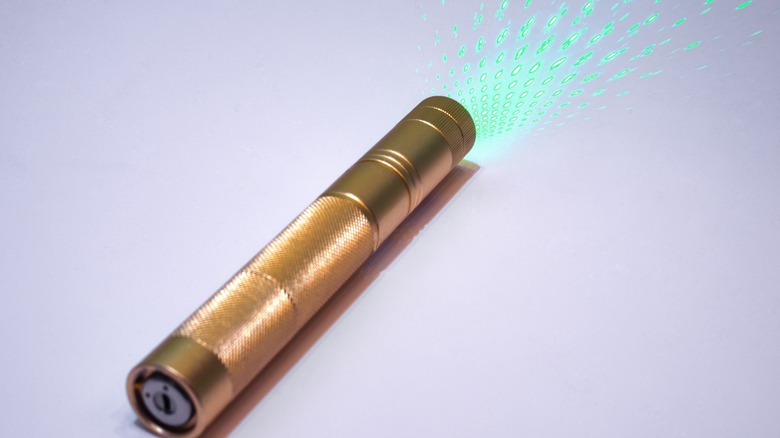Switzerland's Laser Lightning Rod Explained
You may think that hurricanes, floods, and tornadoes are among the deadliest weather phenomena. And you'd be right. But another deadly weather force is one that you probably don't give much thought to: lightning. According to the academic paper "The Number of Documented Global Lightning Fatalities," lightning strikes kill between 6,000 and 24,000 people worldwide.
Lightning strikes are actually less lethal than they were a few centuries ago. According to How Stuff Works, there was a time when lightning strikes could level entire cities. That's because tightly-packed cities were often built with flammable, wooden structures, and lightning could easily start fires. None other than Benjamin Franklin came up with a simple and elegant solution to the problem: use a metal pole — a lightning rod — to safely direct the lightning's discharge into the ground. This invention has saved untold numbers of lives.
However, a lightning rod can only be as tall as the building it's attached to, and for now, that limit seems to be around 3,000 feet or so. However, in 2023 Swiss researchers announced that they had successfully used a lightning rod that is effectively infinite, using not metal, but light itself, as CNN reports.
Proof Of Concept
All lasers — from the $5 device you amuse your cats with all the way up to the ones used in space exploration and similar fields — are effectively the same technology. They're all laser pointers, they're just pointed at different things for different reasons. There are also differences in power output, size of the beam, color, and so on. But they all have one thing in common: They produce light, and light only. And light, unlike a lightning rod, is not a solid thing.
So how does a beam of light — albeit a special beam of light built under precise conditions — act in a way that directs lightning into the ground? Jean-Pierre Wolf, professor of applied physics at the University of Geneva, said in a statement, via CNN, that lasers as powerful as the Swiss lightning laser are so strong that they create a plasma that guides the lightning strike safely into the ground, in the same way that a metal lightning rod would. "This ionized air, called plasma, becomes an electrical conductor," said Wolf.
Ideally, the area made "safe" by the presence of a lightning rod is directly proportional to its height. As CNN explains, if a lightning rod is 30 feet high, then everything in a 30-foot radius of the rod is protected. The Swiss lightning laser is effectively infinite, but no one expects it to protect the whole world. However, if it can be shown to work, then the applications for protecting larger areas like airports, forests, wind farms, and so on, are endless.
It Works (Somewhat)
The Swiss laser lightning rod sits atop a mountain called Säntis, according to CBC News, next to a telecommunications tower that itself gets struck by lightning about 100 times per year. Then, over the course of a few weeks in 2021, it blasted pulses of laser light into the atmosphere whenever thunderstorms were in the area. On at least four occasions, the device directed lightning into the lightning rod, although only once did cameras catch it happening. According to Popular Science, the strike that was caught on camera shows that the bolt was diverted about 50 meters, or around 150 feet.
Though the results are promising, there are several drawbacks. For one, shining extremely bright lasers into the atmosphere is not best practice, particularly when airplanes are about, meaning that any airport where this technology is used would have to shut down nearby air traffic during a thunderstorm. There's also the $2 million price tag.
Nevertheless, the results could have implications for wide-ranging lightning protection in the future. Meanwhile, the team has published its results in the academic paper, "Laser-Guided Lightning," available via Nature.


